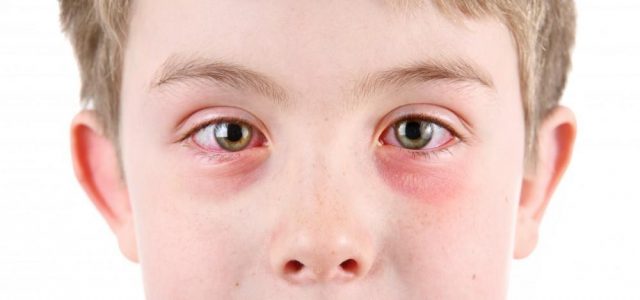
Pink eye, known as conjunctivitis to your optometrist, is no laughing matter. It’s an infection of the mucus in your eye, it hurts, it’s unsightly, and it’s contagious. That’s what it is. But do you know what it isn’t?
So many urban myths and legends have surrounded the stigma of pink eye for so long, you may have let a few of them creep into your knowledge bank and are now confused about the facts.
Our team of expert doctors at Benjamin Optical is here to set the record straight, dispel any false illusions you may have about pink eye, and make sure you know when to come see us for treatment.
Myth #1: Pink eye is a kids’ condition
Fact: Anyone can get pink eye: kids, adults, women, men, even dogs and cats. The reason for the myth that only children get pink eye is simply that they get it often. That’s because they tend to pay less attention to hygiene than grown-ups, so they rub their eyes with their bacteria-ridden hands and, voila, pink eye.
Myth #2: You have to throw away all your clothes and bedding
Fact: If you have pink eye, it’s a good idea to frequently wash your bedding, especially your pillowcases. The same goes for anything that touches your eye directly, such as a sweater sleeve you rubbed across your eye or the washcloth you used to scrub your face. There’s no need to go to the extreme of throwing these things away.
However, you should throw away contact lenses and makeup that came into contact with your infected eye.
Myth #3: Pink eye might blind me
Fact: Conjunctivitis is a minor infection. It won’t blind you or permanently affect your vision. That said, your eyes are precious, and keeping them healthy is important. If you have conjunctivitis or other eye issues, it’s always best to play it safe and seek medical attention. Leaving infections untreated can develop into more complicated problems.
Myth #4: Pink eye means I need antibiotics
Fact: There are several types of pink eye and different treatments for each. In many cases, your pink eye will get better on its own in about a week or so. If it’s caused by a bacterial infection, antibiotics can help you get a handle on it. However, it could be caused by allergies, which would respond better to antihistamines or eye drops. And if your pink eye is caused by a virus, then antiviral medication is needed. When you come to our office, we can determine the right treatment for your specific type of pink eye.
Myth #5: If my eye is pink, I have pink eye
Fact: One of the first things your eye does when it encounters a problem is turn pink. If you get a speck of dust under your lid, it turns pink. If you rub it too hard and scratch your cornea, it turns pink. You get the picture. While conjunctivitis carries the nickname “pink eye,” it’s not the only eye condition that causes discoloration, and some of them are serious, such as uveitis or glaucoma. We recommend coming in to see us so we can make sure that it actually is pink eye and not something worse.
Now that you know the facts about pink eye, give us a call or book an appointment online at one of our four New York offices so you can find out what’s going on with your eye and learn how to fix it.
